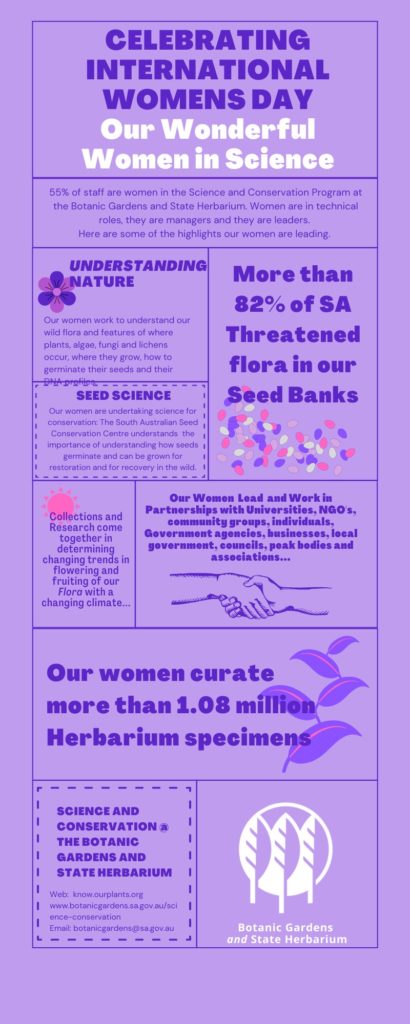Celebrating our fascinating plants!

For more information:


Hemistemma aubertii, the type of Hibbertia subg. Hemistemma. Illustration in Du Petit Thouars, Histoire des végétaux recueillis dans les isles australes d’Afrique.
Tim Hammer is currently undertaking a post-doc at the State Herbarium of South Australia and The University of Adelaide, working on the genus Hibbertia for the Flora of Australia, He is collaborating with Hon. Research Associate Hellmut Toelken, a world-expert on the genus.
Today, 5 Apr. 2022, two research papers by Tim and co-authors were published online…
(1) J. Kellermann, T.A. Hammer & H.R. Toelken, Uncovering the correct publication date, spelling and attribution for the basionym of Hibbertia subg. Hemistemma (Dilleniaceae). Taxon 71.
The authors resolve a complex nomenclatural issue, namely the spelling, author ship and correct publication date of Hemistemma, the basionym of Hibbertia subg. Hemistemma, which contains many well-known species from eastern Australia. It was published in the journal of the International Association of Plant Taxonomists, Taxon.
(2) T.A. Hammer & K.R. Thiele, Hibbertia archeri (Dilleniaceae), a new and rare species from Western Australia with transcontinental affinities. Swainsona 36: 67-70 (1.6mb PDF).
A new species of Hibbertia from north-east of Esperance is published today in Vol. 36 the State Herbarium’s journal Swainsona online. It is only known from two populations, c. 40 km apart. It is most closely related to species of the Hibbertia stricta species group from eastern Australia, e.g. H. deviatata, H. setivera and H. riparia.
To access content of all volumes of Swainsona and the Journal of the Adelaide Botanic Gardens since Vol. 1 (1976), please visit the journal’s web-site at flora.sa.gov.au/swainsona or the Swainsona back-up site.
Lets celebrate the Wonderful Women in Science and Conservation at the Botanic Gardens and State Herbarium and they work they do! A huge thank you to all the amazing women I work with and who inspire and challenge me every day! 
I encourage everyone to take a moment to think about the women you work with who you respect, admire and want to recognise in small or grand ways! Then do so!
Michelle Waycott
Chief Botanist
For over 20 years, State Herbarium of South Australia botanist Jürgen Kellermann and colleagues Kevin Thiele (Canberra), Frank Udovicic and Neville Walsh (both Melbourne), are undertaking research on Rhamnaceae and revise the plant family for the Flora of Australia. Collaborators on the current research grant supporting this research by the Australian Biological Resources Study, Canberra, are Michelle Waycott, Ed Biffin, Korjent van Dijk from Adelaide and Catherine Clowes from Melbourne, as well as Francis Nge, who now works in Montpellier (France).
Ramnaceae is a medium sized family of over 900 species and includes tropical and temperate trees, shrubs and some vines. It is cosmopolitan and species grow on all continents, except Antarctica. In Australia there are currently about 250 species recognised in 24 genera. There is a high level of endemism with at least 90% of Australian species occurring only on the continent. A significant number of species (approx. 30%) are classified as nationally rare or threatened.
This week, the treatments of 19 smaller genera (with 37 species) were published in the new online Flora of Australia. Most of these are widespread tropical and subtropical genera with only a few representatives in Australia: Alphitonia (5 species), Colubrina (2 spp.), Emmenosperma (2 spp.), Gouania (2 spp.), Hovenia (1 sp.), Noltea (1 sp.), Rhamnella (1 sp.), Rhamnus (2 spp.), Sageretia (1 sp.), Schistocarpaea (1 sp.), Ventilago (3 spp.) and Ziziphus (4 spp.). Some other genera are endemic to Western Australia or centred in this state: Blackallia (1 sp.), Granitites (1 sp.), Papistylus (2 spp.), Polianthion (4 spp.), Serichonus (1 sp.) and Siegfriedia (1 sp.). Finally, Discaria (2 spp.) occurs in eastern Australia and Tasmania, with related species in New Zealand and South America.
Work on the remaining five, larger genera (Cryptandra, Pomaderris, Stenanthemum, Spyridium and Trymalium) is in progress.
Written by State Herbarium botanist Jürgen Kellermann.
The State Herbarium of South Australia wishes all followers of the blog, its volunteers, staff, Hon. Research Associates and Research Affiliates a relaxing Christmas break and all the best for the New Year 2022.
You must be logged in to post a comment.